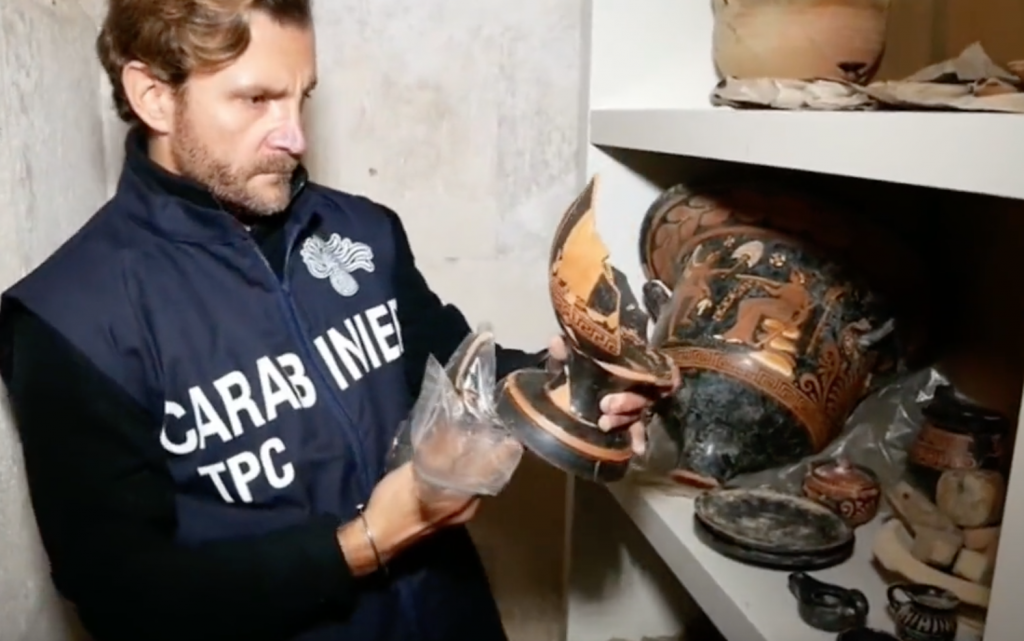Crime
Police in Italy Busted a Major Antiquities Trafficking Ring, Seizing Some 3,500 Relics in the Process
Twenty-one suspects faces charges of criminal conspiracy, theft, and the illegal export of goods.

Twenty-one suspects faces charges of criminal conspiracy, theft, and the illegal export of goods.

Artnet News

Police in Italy seized more than 3,500 ancient artifacts during a major bust of an international trafficking ring this week.
Sixteen people across multiple locations were arrested, while five others remain at large. The suspects face charges that include criminal conspiracy, theft, and the illegal export of goods, according to Reuters.
The investigation, which began last fall, was led by the Carabinieri Command for the Protection of Cultural Heritage, a special unit dedicated to crimes involving art and antiquities. The probe led them to several sites in Southern Italy associated with the trafficking ring, including operational bases and illegal dig sites in the regions of Basilicata, Campania, and Puglia.
Tutela del Patrimonio Culturale, il Nucleo dei @_Carabinieri_ TPC di #Bari ha concluso, il #24maggio 2023, l'#OperazioneCanusium. Nel corso delle investigazioni, avviate nel 2022, sono state sequestrate diverse migliaia di reperti archeologici. https://t.co/IyOx3dmFDk #MiC pic.twitter.com/lOWISyyecM
— Ministero della Cultura (@MiC_Italia) May 24, 2023
Surprise raids of these locations yielded ancient ceramics, jewelry, and bronze, gold, and silver coins dating from the 4th century B.C.E. to the 3rd century C.E. Authorities also recovered excavation tools like metal detectors and documentation of illicit transactions in Italy and abroad.
Among those involved in the elaborate criminal operation were grave robbers, fences, and exporters. The latter group is believed to have facilitated sales of illegally sourced relics to auction houses abroad.
In a statement, the Commander of the Carabinieri for the Protection of Cultural Heritage, Vincenzo Molinese, called his unit’s effort an “investigative success” that “demonstrates unequivocally how our territory still holds immeasurable treasures prey to grave robbers and unscrupulous traffickers.”
Scavi clandestini ed esportazione illecita di reperti archeologici. #Carabinieri #TPC disarticolano un sodalizio che commercializzava monete archeologiche sul mercato illecito globale. Migliaia di reperti recuperati durante le indagini. 21 arresti ➡️https://t.co/kV8w9TCwez pic.twitter.com/tuSbsfx3Gg
— Arma dei Carabinieri (@_Carabinieri_) May 24, 2023
Italy’s Minister of Culture, Gennaro Sangiuliano, described the investigation as a “brilliant operation.” He added that the Ministry’s “database of illicitly stolen cultural assets,” thought to be the largest resource of its kind in the world, proved to be particularly helpful in this and other recent investigations, as the country has continued to crack down on illegal digs and antiquities sales.
More Trending Stories:
A Sculpture Depicting King Tut as a Black Man Is Sparking International Outrage